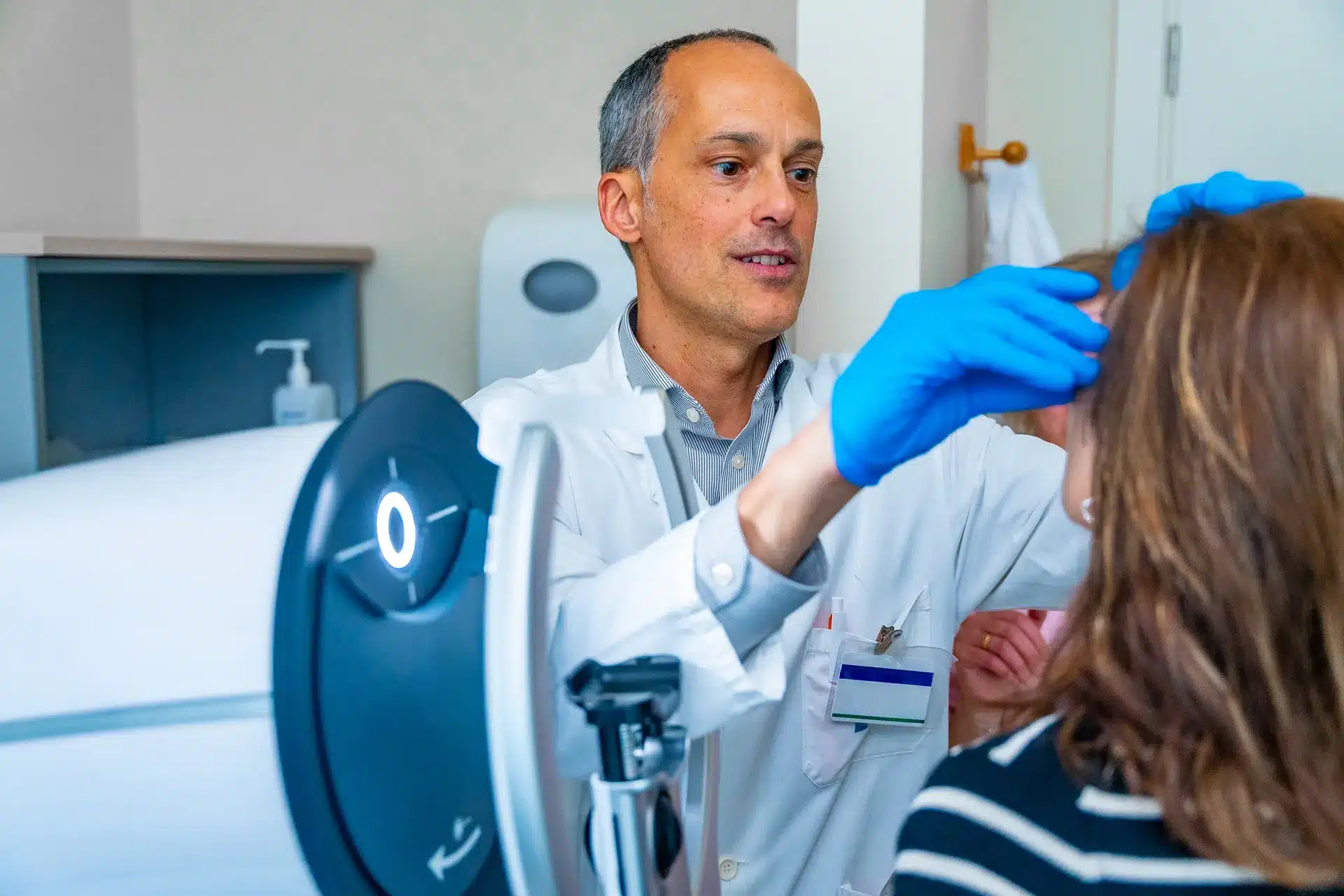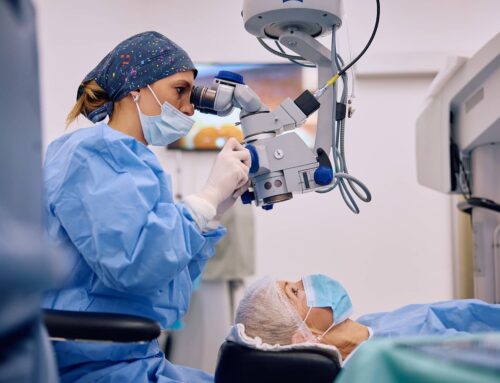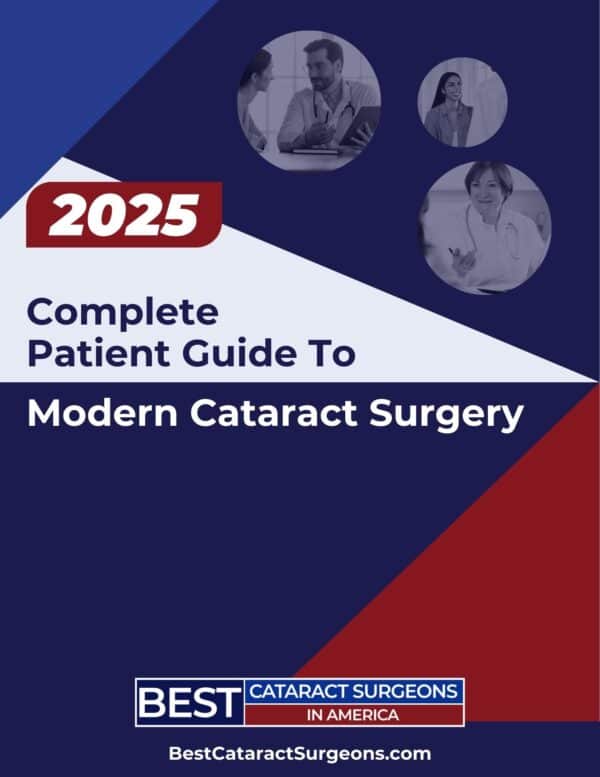A millenia ago cataract surgery started with the technique of curing cloudy vision with a needle. Today, it’s a high-tech procedure that restores your sight. This post dives into the storied history of cataract surgery, exploring the groundbreaking milestones and pioneering advancements that have shaped this once primitive practice into the vision-saving wonder it is today.
Couching – The Ancient Beginnings
The earliest known form of cataract surgery dates back to ancient civilizations, where a technique called “couching” was practiced. This primitive method involved using a sharp instrument to nudge the clouded lens off-center, pushing it into the jelly-like fluid at the back of the eye (vitreous cavity) [1]. While couching provided temporary relief, it was often associated with complications and did not truly restore clear vision.
The History of Cataract Surgery – Earliest Depictions
Depictions
- The earliest known depiction of cataract surgery is on a statue from the Fifth Dynasty of Egypt (2467–2457 BCE), and a relief painting from a tomb in Deir el-Medina (c. 1279–1213 BCE) which shows a man undergoing what is believed to be cataract surgery[2].
- Cataract surgery was introduced to China from India and flourished during the Sui (581–618 CE) and Tang (618–907 CE) dynasties [3, 4].
Primitive Extraction Techniques
- The Indian physician Sushruta (c. 6th century BCE) described a primitive form of extracapsular cataract extraction (ECCE) in his medical text Sushruta Samhita, involving puncturing the lens capsule and expelling the lens material [5, 6, 7].
- The Greek physician Galen of Pergamon (2nd century CE) was reportedly able to perform cataract surgery using a needle-shaped instrument to remove the lens, as he had an understanding of where the crystalline lens was located [8, 9].In the 10th century, the Persian physician Muhammad ibn Zakariya al-Razi and the Iraqi ophthalmologist Ammar Al-Mawsili described a method of cataract extraction by suction through a hollow instrument, with Al-Mawsili presenting case histories of successfully performing this procedure [10, 11].
Jacques Daviel & Modernized Extracapsular Cataract Extraction (ECCE)
In 1747, French ophthalmologist Jacques Daviel performed the first planned and documented ECCE, marking a significant advancement for the history of cataract surgery. His technique:
- Make a larger corneal incision and use a blunt needle to puncture the lens capsule.
- Extract the lens using specialized instruments [12].
While Daviel’s technique was a significant improvement over couching, allowing for complete cataract removal, it did have higher risks for surgically-induced astigmatism, prolonged recovery times, and other surgical complications.
The 18th Century Introduced Intracapsular Cataract Extraction (ICCE)
Building upon Daviel’s work, in 1753, London surgeon Samuel Sharp introduced intracapsular cataract extraction (ICCE), involving the removal of the entire lens-capsule complex in one piece [13]. While addressing some limitations of ECCE, it came with its own set of unique surgical risks like vitreous prolapse, retinal detachment, and difficult IOL implantation due to the lack of capsular support.
Intraocular Lens Implantation & Phacoemulsification
Harold Ridley & The First IOL
A major breakthrough in the history of cataract surgery occurred in 1949 when British ophthalmologist Harold Ridley implanted the first intraocular lens (IOL) after observing that the eye tolerated certain types of plastic [14]. This paved the way for restoring clear vision without the need for thick corrective glasses after cataract removal.
Charles Kelman and Phacoemulsification
In 1967, American ophthalmologist Charles Kelman introduced phacoemulsification, a revolutionary technique that transformed cataract surgery. This method involves:
- Creating a small incision in the cornea.
- Using an ultrasonic probe to break up the cataract into tiny pieces.
- Suctioning out the emulsified lens material.
Phacoemulsification offered numerous advantages, including smaller incisions, faster recovery times, and reduced risk of complications [15].
The History of Cataract Surgery in the 20th/21st Centuries
The late 20th century witnessed several significant advancements in cataract surgery, including:
- Ophthalmic Viscosurgical Devices (OVDs): These gel-like substances, introduced in 1972, protect and maintain the shape of the eye during surgery.
- Nd:YAG Laser for Posterior Capsulotomy: The development of the Nd:YAG laser in the 1980s allowed for the safe and effective treatment of posterior capsular opacification, a common complication after cataract surgery [16].
- Foldable IOLs: The introduction of foldable intraocular lenses enabled smaller incisions and faster healing times, while topical anesthesia replaces the need for injections, making cataract surgery more comfortable[17].
- Reduced Incision Sizes: Advancements in surgical techniques and instrumentation led to smaller incision sizes, further reducing recovery times and complications.
- Toric IOLs: Toric IOLs were developed to correct astigmatism, providing better visual outcomes for patients with this refractive error.
- Optical Biometry: Precise measurements of the eye using optical biometry allowed for more accurate IOL power calculations, improving visual outcomes.
- Manual Fragmentation Techniques: Techniques like the divide-and-conquer and phaco chop methods were introduced to facilitate the removal of harder cataracts without relying solely on ultrasonic energy.
- Swept-Source Optical Coherence Tomography (SS-OCT): The integration of SS-OCT into surgical microscopes has provided real-time, high-resolution imaging of the eye during cataract surgery, enhancing surgical precision and safety.
The Future History of Cataract Surgery Looks Bright
The future holds promise with emerging digital technologies, artificial intelligence, and collaborative efforts converging to push the boundaries of precise, personalized, and transformative cataract care. From the rudimentary couching of antiquity to today’s cutting-edge marvels, the history of cataract surgery is a testament to human ingenuity and the relentless pursuit of improved vision and quality of life.
To explore more resources related to modern cataract surgery, such as advanced lens implant options, or finding the best cataract surgeons near you, visit BestCataractSurgeons.com.











